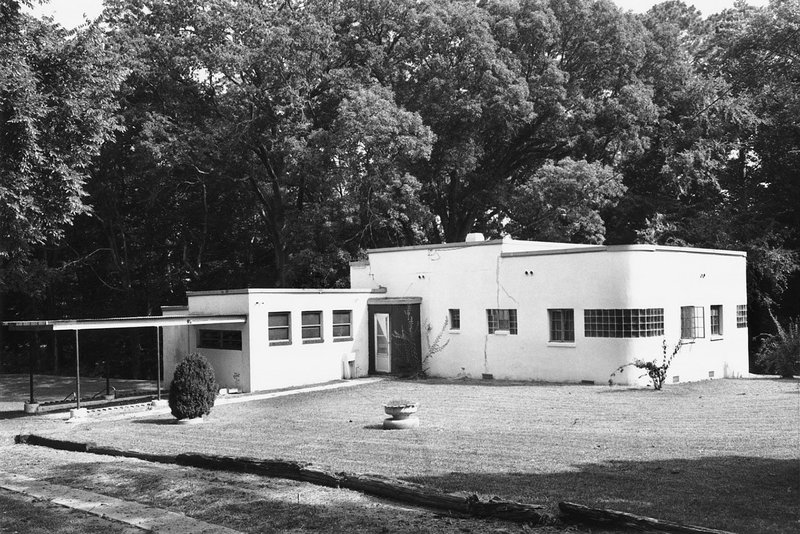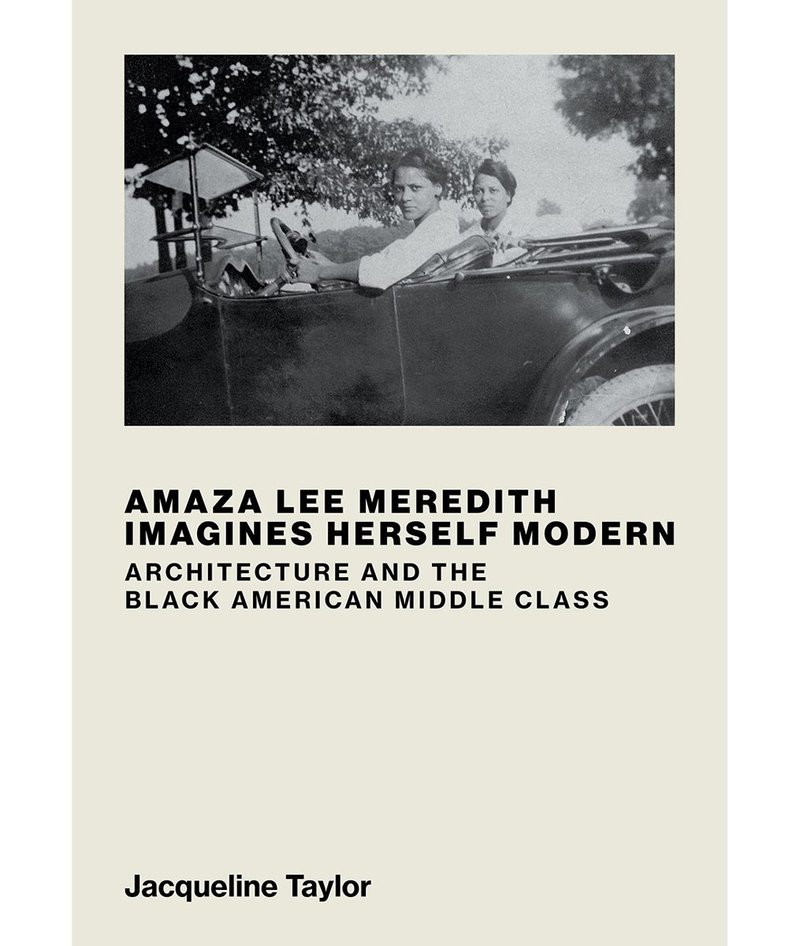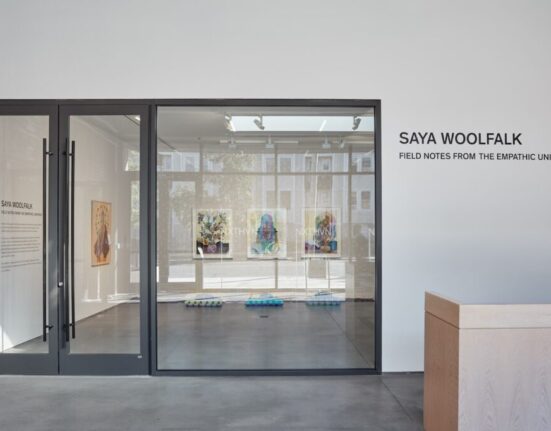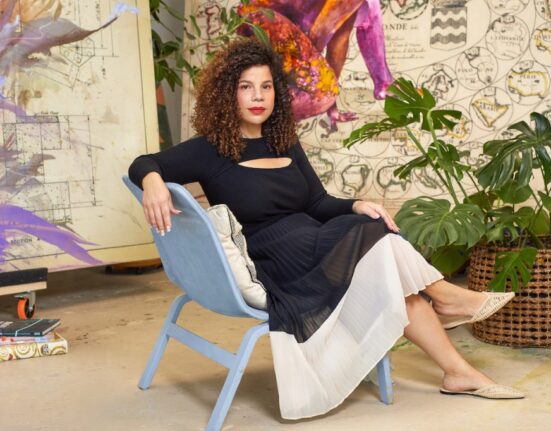Amaza Lee Meredith’s Azurest South, her self-designed home for herself and her lover, reveals an avant garde representative of the Black American middle class

‘As a designed object, the building was neither monumental nor exquisitely beautiful, but it had a certain charm, an allure, that was irresistible.’
So says author Jacqueline Taylor of Azurest South, the modernist house at the centre of her enlightening book Amaza Lee Meredith Imagines Herself Modern: Architecture and the Black American Middle Class.
As the designer of that 1939 house, art teacher and artist Amaza Lee Meredith certainly makes for a fascinating protagonist. In archive photos we see her variously cutting a dash behind the wheels of a car circa 1920, dandily attired in plus fours on a camping trip, and relaxing with her long-term partner and fellow academic, Edna Colson, who shared the home she designed in Petersburg, Virginia.
‘Her accomplishment in designing and building a highly modern house for herself and her lover sets her apart as a woman who used architecture not only to gain security but to identify personality, one that was risky to advertise in such bold and clear physical terms,’ says Taylor.
This book is about rather more than Meredith’s life story, and how Azurest South came to be. Taylor uses this as the lens for exploring the wider societal context of Meredith’s life as an independent professional Black woman ploughing her own course during the inter-war years in America. There is a particular focus on the opportunities and restrictions of an education system infused with racism and sexism. We hear from key Black agents of change such as Booker T Washington and W.E.B. Du Bois as well as many from the world of art education. All is considered against a backdrop of modernism and the role of Black Americans within this.
Meredith was born to a Black mother and white father and grew up in Lynchburg Virginia during a time when segregation laws meant her parents’ interracial relationship was against the law. Meredith loved working with her carpenter father – one of their projects involved fitting out a motor home with built-in carpentry – but there was no prospect of becoming an architect. Instead, like many bright young Black women of the day faced with limited career opportunities, she trained as a teacher, and specialised in art at Virginia State College.
To study to degree level, she needed to head north in 1925, studying fine art at Columbia Teachers College in New York and returning there later for a Masters in art education, introducing her to not only the city’s great museums and galleries, but also the heady cultural milieu and Black modernity of Harlem. The author presents her as something of a flâneuse: ‘With her fluid sexuality, her gender and her race, she constituted the essential modern figure, a woman who kept herself healthy through exercise and in her role as artist sought out the spaces of modernity in the city.’

After both New York sojourns she returned to teach at Virginia State College, establishing a Department of Art. Here, she devised a progressive curriculum that acknowledged the value of African aesthetics, challenging the bias of the western European art canon. She introduced a photography course, established a gallery at the College and mixed with the Virginian elite as part of a new Black middle class.
Meredith had met her partner Edna (once her teacher) in 1915, but it wasn’t until 1939 that they established their home together, the aforementioned Azurest South. Though diminutive, this single-storey home was making quite a statement, not only by virtue of being instigated by two Black women who were a couple, but because of its modern design in the International Style.
Located on the edge of the Virginia State College campus, the house had an overtly modern form with a flat roof and terrace. Embracing industrial materials including glass bricks, it was resplendent in white stucco with a black roof frame and striking turquoise trim. Inside, there was a stylish shared living space, two equal bedrooms, and studio space to work.
So how did Meredith come to design such a house? While she was well-armed by dint of her art training and practical building knowledge, she also, we learn, drew inspiration from homes publications, in particular The 1938 Book of Small Houses: A New and Authoritative Guide Book for Prospective Home Builders. In 1932, she had visited MOMA’s 1932 seminal Modern Architecture: International Exhibition while in New York. Lloyd also sets Meredith’s design in the context of the work of notable women designers of the day such as Eileen Gray and Charlotte Perriand.
The house’s design – illustrated in the book by technical drawings and a few photos – formed a sharp contrast with the bombastic Colonial Revival architecture revered in Virginia as the true American style. In doing so, says Taylor, Meredith broke with the constrictions of the past and instead aligned herself with the avant-garde work of primarily European architects.
‘Patterns emerging at this time suggest that independent women with leanings toward innovative lifestyle choices identified with architectural modernism as a style in which to build their personal space,’ she says.
Meredith and Colson were to spend many decades at the house, as well as enjoying vacations at a development of holiday homes that they helped instigate for Black clients in Sag Harbour, Long Island. Here, she was able to further pursue designing and building.
It’s a pity that Meredith didn’t ever write about Azurest South, or expand on her interest in architecture, although her passion for learning and teaching comes through strongly. What is also clear is her pioneering ability to ‘transcend the limitations of her own time and place’, says Lloyd, in order to resist the misogyny and racism of the day: ‘Rather than succumb to society’s dictates for a marginalised group, Meredith boldly built her own ideas, transforming the landscape with a determination not only to be included, but to lead.’
Amaza Lee Meredith Imagines Herself Modern: Architecture and the Black American Middle Class by Jacqueline Taylor, MIT Press







